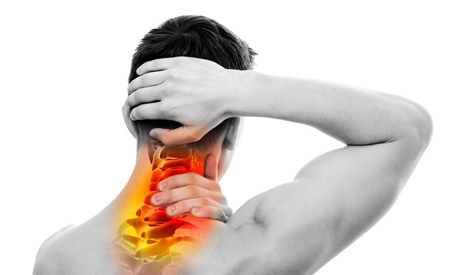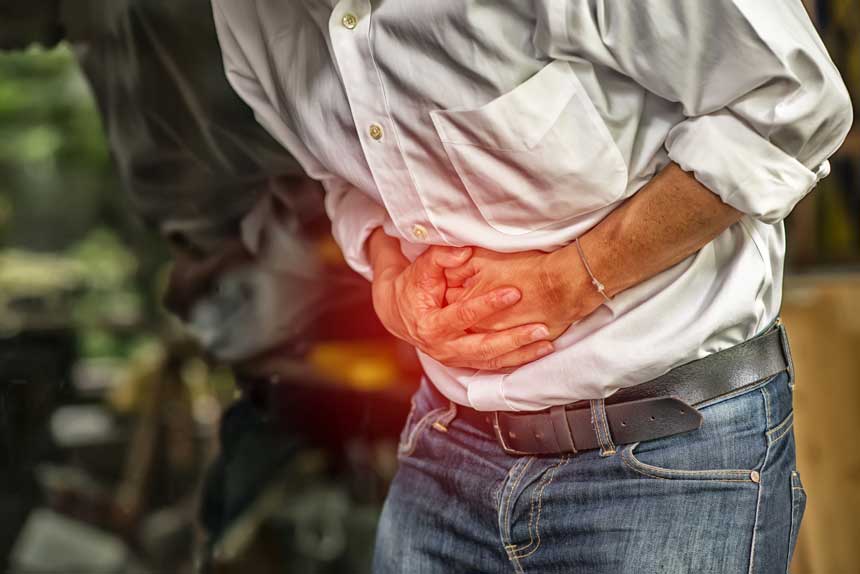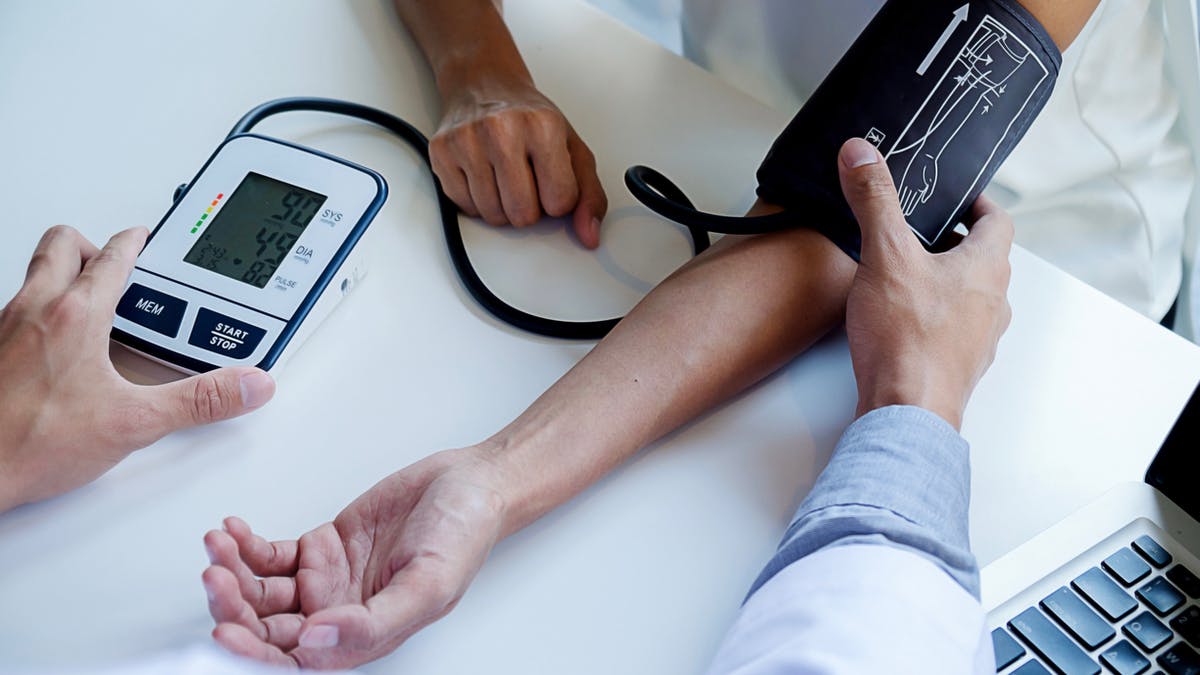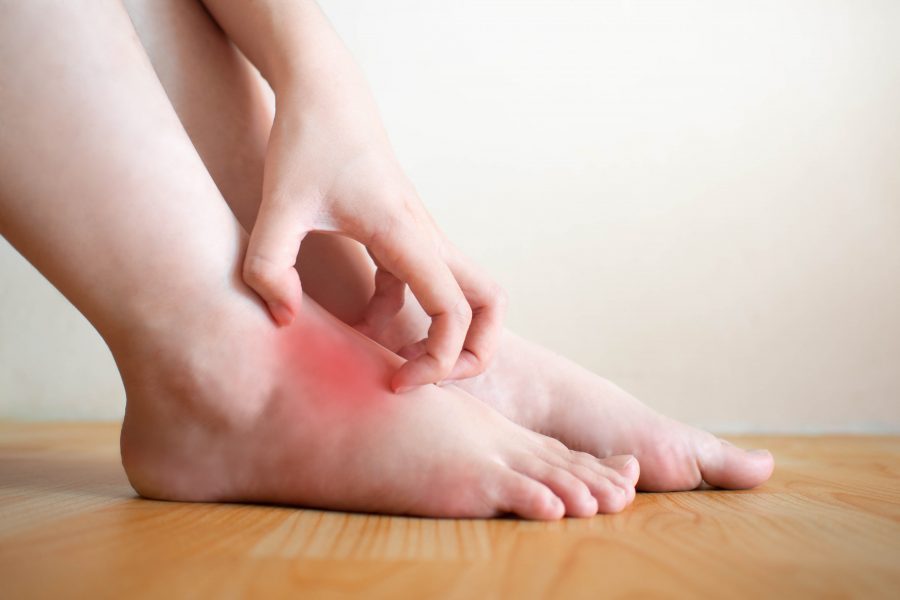Everything about disc rupture or herniation
Disc rupture occurs when too much pressure is applied to the disc wall, usually with age or trauma.
Our spine is made up of columnar bones, and when a rupture occurs between the spine, the lumbar disc protrudes and may also be due to pressure on the spinal nerve. There are spinal discs, nerve roots, tendons, and muscles in the lower back, each of which causes normal to severe pain. Two percent of people with chronic low back pain also develop a lumbar disc herniation.
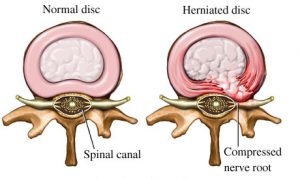
What is a herniation lumbar disc or rupture?
When excessive wear and tear causes the pulp nucleus (the center of the disc-like jelly) to move toward the disc’s thick wall, a hernia problem occurs, usually caused by trauma, injury, or aging.
When the central core of the disc protrudes completely from its wall, the disc protrudes. There is a possibility of fragmentation in severe cases where the hernia tissue separates from its place and enters the spine. Lumbar disc rupture is expected in the lumbar spine when isolated materials and tissues collide with nerve roots, spinal nerve, or spinal cord.
A ruptured disc causes severe pressure on the spine, especially when you take a nap, bend over, or lift something. With age, the lumbar discloses its previous strength and may become slightly protruding or flattened. The gelatinous material inside the disc gradually dries and hardens. If the damaged disc is close to a nerve in the spine or spinal cord, it becomes inflamed.
A ruptured disc in the lumbar region usually affects the sciatic nerve root, located at the end of the spine on both sides. The sciatic nerve runs from the bottom of the foot and the inside of the foot, so pain, tingling, and numbness are felt in these areas.
Types of lumbar discs based on MRI:
- Very mild disc dehydration
- Mild lumbar disc bulge
- Medium bulge
- A severe lumbar disc extrusion
Causes of lumbar disc rupture:
- Tissue degeneration and weakening due to aging
- Frequent wear of spinal discs due to pressure tolerance
- Injury or injury
- Heavy and repetitive work
- Do heavy work and daily activities
- Exercise a little
The main symptoms of disc rupture:
Pain in the lower back and sometimes burning in the lower leg occur in these conditions. Symptoms of a lumbar disc herniation usually improve spontaneously after a few weeks to a month; if the problem persists chronically and severely after a few months, surgery may be needed. Low back pain is one of the central disc rupture symptoms due to muscles, tendons, and robots’ movement.
Other symptoms of lumbar disc herniation
This pain is accompanied by burning, but other symptoms include:
- Very severe pain in the legs and back
- Tingling of the foot
- Leg weakness
In this case, sciatica pain in the legs intensifies. You will overcome more pain when standing and sitting because movement causes tenderness of the sciatic nerve and pain when sneezing, coughing, or sitting in the toilet bowl intensifies.
Where is the most disc rupture?

The most common lumbar disc herniation sites are between the fourth and fifth vertebrae (L4 L5) and the fifth and first sacral vertebrae (L5 S1). These two spaces, which include the least lumbar spaces. They are more at risk due to the disk’s size and the lower and higher pressure. Lumbar disc rupture can cause problems in two ways:
Direct pressure of a ruptured disc into the spinal canal or intervertebral foramen can pressure nerves (or spinal cord).
Chemical stimulation, chemical stimulation of nerve roots after rupture, and the disc’s primary material can cause inflammation of the nerves.
Pressure on nerve roots and chemical stimulation can lead to problems with spinal nerve root function.
Diagnosis of lumbar disc herniation and hernia
Examining the sciatic nerve usually shows a ruptured disc because the sciatic nerve near the lumbar disc can affect different areas of the pelvis, calf, soles of the feet, and CT scans MRIs may be prescribed. Very detailed questions about a person’s symptoms and medical history diagnose the condition. The disc may be abnormal on MRI, but the person may not feel any pain or problems.
Home treatment of rupture and disc protrusion
Lumbar discs and sciatica usually clear up on their own after a few weeks, but they may be longer in some cases. Solutions to improve this condition include ice and hot massage for the home treatment of intermittent lumbar disc herniation and daily rest and exercise.
How to use cold and heat
Apply cold compresses to the sore spot; It helps to numb the nerve and reduce discomfort in this area, especially in the area where you first felt the pain. Heating pads and hot showers can also reduce muscle stiffness and cramps in the lower back so you can move freely.

Painkiller
Painkillers that reduce inflammation in this area are:
- Non-steroidal anti-inflammatory drugs such as ibuprofen, naproxen
- Acetaminophen
- Aspirin
But be sure to use these medications as prescribed by your doctor. Overuse of some of these painkillers, especially non-steroidal anti-inflammatory drugs, can cause bleeding and stomach damage. If these and other medications do not help, you may need to seek a muscle relaxant.
physical activity
We do not recommend sleeping or resting too much in bed for back pain, so try to do a little activity that fits your condition. Walk as much as you can, and do daily activities.
Sport
When the pain increases, doing a little gentle exercise and stretching allows you to return to your normal physical activities. It would help if you also did these exercises under a physiotherapist’s supervision to have high safety and security. They were sure

Treatment of lumbar disc with herbal medicines
Herbal remedies can reduce inflammation in the body, including the lumbar disc.
For the herbal treatment of lumbar disc herniation and reduce inflammation, use seedless dates and place about a pack of seedless dates in the area of inflammation for 48 hours.
Willow is one of the herbal remedies for a lumbar disc that its salicylate substance has a significant effect in reducing lumbar disc inflammation.
Use ginger for herbal treatment of lumbar disc and osteoarthritis. Ginger tea is very effective in reducing inflammation.
Complementary care
Massage and acupuncture can be useful in relieving back pain and discomfort. You only need to use one person and one reputable place to perform this treatment. Using the benefits of acupuncture combined with polar therapy and aiding polarity theories treats many patients with lumbar disc herniation.
Modern treatments for disc rupture with and without surgery
Treatment of lumbar disc rupture with spinal steroid injection
Spinal steroid injection is known as a safe and appropriate treatment with very few side effects. To control pain in patients and treat lumbar disc herniation and severe pain, patients need direct injections of steroids or anesthetics into the spine to reduce pain and inflammation. These injections show symptoms associated with nerve fiber compression and pain and inflammation.
Spinal stimulation
Spinal stimulation is a relatively invasive procedure but is a long-term option for relieving lumbar disc herniation in patients. This method is entirely reversible and safe and useful for disc rupture and any other pain type.
Radiofrequency ablation and spinal cord stimulation are other medical treatments. In the process of treating spinal stimulation, placing a small device near the spine sends a weak electrical pulse to the target spaces, and this electrical pulse can send pain signals that are neutralized through nerve fibers transmitted to the brain. Patients can change the settings of this device manually with remote control.

Lumbar disc surgery
If sciatica lasts for more than three months, the level of care should probably be increased. Some people also need surgery first. Injecting anti-inflammatory steroids can be a way to delay surgery, but it is not a long-term way, and it is usually up to you to decide whether or not to have surgery. Your doctor will explain the pros and cons of choosing or ignoring surgery, depending on your lifestyle.
If a ruptured disc cannot be treated with minimally invasive techniques, we may use one of the least invasive methods widely used by spinal surgeons worldwide.
Discectomy surgery
Surgical techniques are varied, but in a discectomy, the ruptured disc is removed so that no pressure is applied to the spinal nerve root. This procedure aims to reduce the bone or disc pressure, which puts pressure on the spinal nerves without fusion. There is no guarantee that this surgery will be useful, and a ruptured disc may occur again.
Lumbar spine surgery
With this method, muscle damage and pain intensity are significantly reduced. In this type of operation, the risks are much less than open spinal surgery, and the speed of recovery is higher. This procedure stabilizes the spine by stopping the movement that causes mechanical pain when the patient moves, and this surgery also reduces the pressure on the nerves at this level.
Improvement
Most disc herniation pain goes away after a month but usually improves gradually over some time.
Exercise can help prevent and rejuvenate low back pain.
Traditional exercises such as yoga and Tai Shai also help strengthen these muscles, protect the spine, but you must be careful not to overdo it. Following these tips will help you recover faster after surgery:
- Regular exercise
- Maintain a balanced weight
- Avoid activities that increase back pain
Ways to prevent lumbar disc rupture
- Avoid standing for long periods
- Avoid sitting at a table for several hours a day
- Avoid getting too tired while exercising
- Do not lift heavy objects
- Do not do repetitive movements
Regular exercise, stretching, and flexibility of the body, sitting and standing correctly, and adding enough calcium to the diet are ways to protect the back.
Complications of delayed surgery
Failure to act or act late in patients with mobility problems can cause irreversible movement disorders. Patients who refuse timely surgery develop severe neurological symptoms called horsetail syndrome. The patient develops severe movement disorders in the lower extremities and has a sphincter, urinary, and fecal disorders.
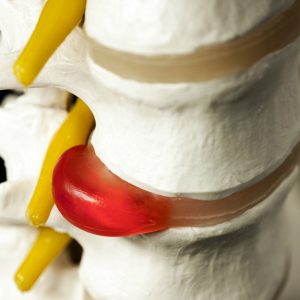
Recommendations for the treatment of lumbar disc rupture
The most crucial factor in stimulating the lumbar disc is bending and twisting the back, avoiding this movement, and bending at the knee so that the problem lumbar disc is not stimulated again.
Avoid repeated bends that irritate the lumbar disc.
The maximum time allowed to sit is 20 to 30 minutes, and for healthy people, 60 minutes, so do not sit too long.
Avoid the stairs as much as possible.
Walking more than 150 meters is prohibited for patients with lumbar disc herniation.
Use the toilet instead of the Iranian toilet.
Avoid during lumbar disc treatment and eight weeks after land travel.
Get help from physical medicine and rehabilitation specialists to start lumbar disc exercises.
Lie on your side or back and sleep firmly on the bed is better than lying on the floor.
Harmful foods for lumbar disc rupture
Lettuce, tomatoes, and potatoes contain melanin, and their nature is cold, so do not eat these foods and use cold foods such as yogurt, cucumber, etc., at night and put hot foods such as dates in meals. The combination of black seed and honey is a way to neutralize these compounds’ painful effects in stimulating lumbar disc inflammation.
Answers to frequently asked questions about lumbar disc herniation and hernia
What is the most dangerous lumbar disc?
The lumbar disc is located in the upper lumbar region and the L1 L2 disc near the spinal cord, and if left untreated, may damage the urinary, excretory, and sexual systems.
Where does lumbar disc herniation pain go?
Sometimes a lumbar disc herniation does not cause back pain and can cause leg and thigh pain. So it may also cause pain in the legs and buttocks, but the primary source of pain is in the lower back.
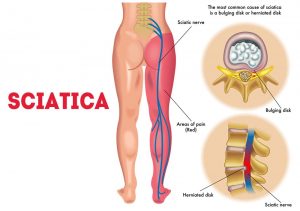
Does a ruptured disc cause sciatica?
Depending on the type of disc rupture, the patient may develop sciatica on both sides or one side. Sciatica is a pain that travels along the sciatic nerve, from the back to the buttocks, then to the back of the thighs, and then to the back of the legs. In discs that rupture in the surrounding environment, the patient has only sciatica.
Who does the most surgery?
Lumbar disc disease in adults or the elderly does not require surgical treatment, and most of these people receive medical treatment and do not require surgery. Still, pediatric discs or young discs require surgery. Surgical procedures are sometimes recommended:
The patient has severe pain symptoms such as sciatica or pain that does not respond to physical therapy.
The patient has lumbar discopathy and is out of daily life.
The patient has nervous conditions such as weakness in raising the ankle, weakness, difficulty walking, weakness in urine, and feces.
Which surgical procedure is best for treating a disc herniation?
Discectomy is a surgery to rupture a lumbar disc in which damaged tissue is removed so that no more pressure is applied to the tissue and nerve fibers next to it. This treatment is less invasive and eliminates the ruptured disc material, reducing pain and inflammation. This surgery is more common, and the results are good, and the pain of many patients is reduced in the first weeks after the operation, but discectomy is a surgery anyway and has its risks.
If the disc is not operated on, can it paralyze the patient?
If the disc protrudes too much, the pressure is applied to all nerve fibers inside the spinal canal. In this case, the patient’s legs suddenly become paralyzed, and the patient suffers from urinary and fecal incontinence.
In a patient with a unilateral rupture of the lumbar disc, only the lower leg is paralyzed, and the patient limps while walking, which is called sagging leg syndrome.
Are lower limb tingling, ankle sprains, and knee sprains common in patients with lumbar disc herniation?
Yes, a patient with a lumbar disc herniation may develop ankle flexion and ankle dislocation in disc herniation 4 and 5. Patients with intervertebral disc herniation 3, 4, 2, or 3 may develop knee dislocation.
When pressure is applied to the nerve root, the sensory fibers are connected, and hundreds of needles are felt in our hands and feet. When sensory fibers are damaged, we feel numbness in our hands or feet.
Why do some torn discs not heal and require surgery?
Because the rate of rupture and disc herniation is high, macrophages are unable to eat the protruding nucleus, the pressure inside the disc is high and does not allow the two edges of the disc ring to meet, the body’s defenses are weak, the macrophages are weak or weak, collagen production is Rarely done.
Also Read:
The properties of pumpkin seeds and the nutritional value

